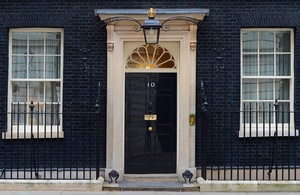-
Minister announces plans to tighten health and safety standards for rental accommodation – ensuring all tenants have a safe place to call home.
-
Move to clampdown on small minority of rogue landlords who turn a blind-eye to dangerous conditions – including the possibility of minimum health and safety standards.
-
Action to ensure carbon monoxide rules are fit for purpose – protecting people from the threat of carbon monoxide poisoning.
Renters are to receive greater protection thanks to plans announced by Housing Minister Heather Wheeler MP which will overhaul health and safety standards for rental accommodation – helping to keep safe the minority of private tenants who currently live in unsatisfactory conditions.
While the vast majority of landlords are responsible owners who take great pride in the properties they lease to their tenants, some private renters live in sub-standard homes with problems such as inadequate heating and damp.
Under current rules, councils are required to ensure rental properties in their area meet important safety standards using the Housing Health and Safety Rating System and are able to force criminal landlords to take action where tenants are languishing in unsafe accommodation.
Yet the system hasn’t been updated in over 12 years, and a new review of the system will consider whether it should be updated and if so, to what extent. The review will also look at whether to introduce minimum standards for common health and safety problems in rental accommodation in order to keep renters safe.
Today’s measures build on government action to drive up standards in the rental sector – making sure tenants are living in safe and secure properties; cracking down on the small minority of landlords that are renting out unsafe and substandard accommodation; and ensuring the housing market works for everyone.
Housing Minister Heather Wheeler MP said:
Everyone has a right to feel safe and secure in their own home.
These reviews will allow us to revisit the current systems for health and safety ratings and carbon monoxide alarms to ensure that both are fit for purpose and meeting the needs of tenants.
By looking again at these rules, we can make sure that they are working as they should to keep people safe and give them peace of mind in their homes.
Ministers have also outlined further detail of the review into carbon monoxide alarm requirements in the home, to help ensure people remain safe from this silent killer.
There are currently around 8 million carbon monoxide alarms in homes across England, with current rules stating that alarms must be fitted in privately rented homes with solid fuel appliances and when solid fuel stoves and boilers are installed.
The review will judge whether legislation goes far enough in keeping people safe from the risks of carbon monoxide in their homes, and whether there should be a blanket requirement to install alarms for other methods of heating, including gas and oil, and to social housing.
Ministers will also consider new research including technological improvements and the falling costs of carbon monoxide alarms and whether this supports a case to extend requirements.
The news demonstrates ongoing government work to support people to feel safe and secure in their home.
Ministers have also introduced tough new powers for councils to tackle the small minority of rogue landlords who rent out overcrowded properties, including fines of up to £30,000 for those landlords who do not comply.
The Tenant Fees Bill, currently making its way through Parliament, will also bring an end to unnecessary, costly fees imposed by landlords or property agents – stopping tenants being charged hundreds of pounds for minor fixes to their homes and putting cash back in their pockets.
Together, the measures will make sure the housing market works for everyone by making renting fair and more transparent for all.
The Housing health and safety rating system is used by local authorities to assess health and safety in residential properties – this includes both private rental properties and council/housing association properties.
